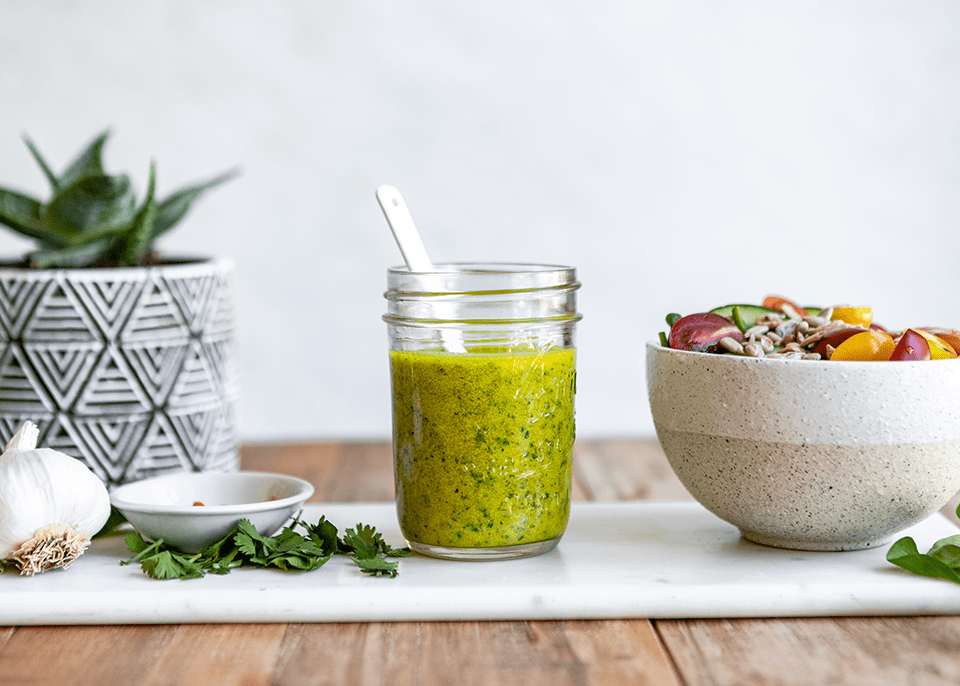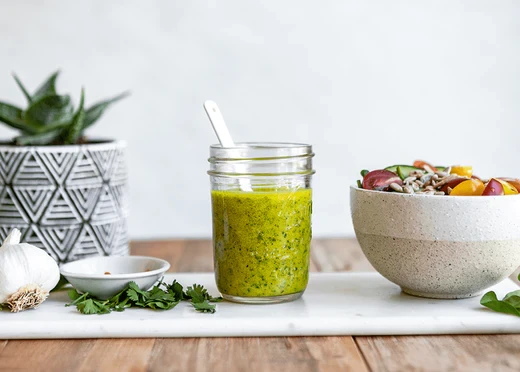There are so many salad dressings on the market today but sadly not all are created equally. Turn over a bottle of salad dressing at your local store and you’re bound to see ingredients such as sugar, additives, preservatives, fillers, buffers, artificial flavors, common allergens, and my least favorite ingredient – bad fats. Take this example of a popular brand found in grocery stores all over the country. Only seven out of the nineteen ingredients listed are real foods that belong in a salad dressing. The rest either aren’t necessary (like sugar for example) or are synthetic industrial products that shouldn’t be part of our daily intake (like soybean oil).
INGREDIENTS: SOYBEAN OIL, WATER, VINEGAR, SUGAR, EGG YOLKS, SALT, CONTAINS LESS THAN 2% OF MODIFIED FOOD STARCH, BUTTERMILK*, WHEY*, XANTHAN GUM, GARLIC*, SPICE, PHOSPHORIC ACID, ONIONS*, DISODIUM GUANYLATE, DISODIUM INOSINATE, NATURAL FLAVOR, SORBIC ACID AND CALCIUM DISODIUM EDTA (TO PROTECT FLAVOR) *DRIED
But it’s not all doom and gloom though. There are more people talking about the importance of good fats than there have been in decades. Because of this growing movement of consumers demanding higher quality fats on the market, there seems to be greater access to some amazing store bought brands of salad dressings and marinades that are both tasty and healthy.
But what about turning the clock back to the time where spending five minutes in your kitchen to whip up your own dressing is a real thing? The act of cooking is both meditative and yet empowering all at once. Even as importantly, since the ingredients in a good quality dressing require us to be selective, when you prepare your own dressing you get to control the ingredients you put in your body. I want you to start drizzling good fats on everything you eat – from meats and fish to vegetables, eggs and even in your beverages. This Ultimate Salad Dressing is an excellent way to begin!
Wondering what type of good fats to use in your salad dressings?
My go-to list:
- Olive Oil
- Tea Seed Oil
- Macadamia Nut Oil
- Organic MCT Oil
- Avocado Oil
Avoid these oils:
- Soy Oil
- Corn Oil
- Canola Oil
- Cottonseed Oil
- Peanut Oil
- Red Palm Oil* (while it is inherently a healthy fat it’s hard to source sustainably. Choose coconut oil unless you trust the brand’s production methodology)







